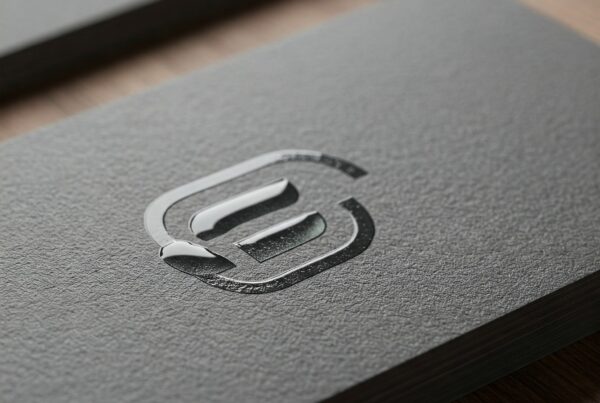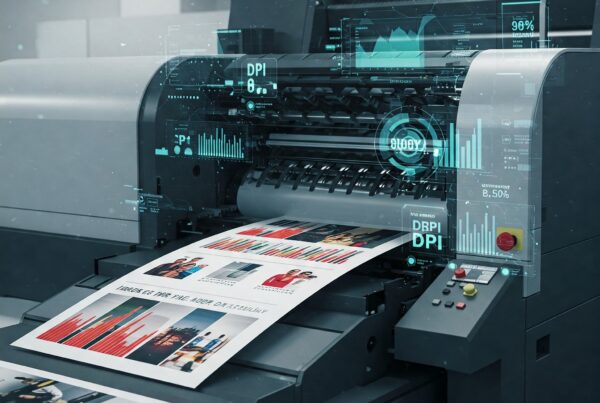Digital vs. Offset Printing – Which One is Right for Your Business?
Understanding digital vs offset printing is crucial for any business looking to produce high-quality printed materials. In today’s competitive market, choosing the right printing method can affect cost, quality, and turnaround time. In this post, we compare digital and offset printing to help you decide which printing method is ideal for your business.
Introduction
Print production plays a key role in branding and marketing. Companies must decide between digital printing and offset printing based on budget, volume, and quality needs. This article explains the differences and guides you on making an informed choice.
What is Digital Printing?
Digital printing uses electronic files to produce prints directly. This method offers quick turnaround times and cost-effective short-run production.
Key Features of Digital Printing
- On-Demand Printing: Perfect for variable data and personalized projects.
- Quick Setup: Minimal prepress work reduces lead times.
- Cost Efficiency: Lower upfront costs, ideal for small volumes.
Advantages of Digital Printing
- Fast Turnaround: Saves time on job setup.
- Customization: Easily print variable content.
- Eco-Friendly: Reduced waste due to on-demand production.
What is Offset Printing?
Offset printing transfers an image from a plate to a rubber blanket and then onto the printing surface. This process is popular for high-volume runs and produces consistent, high-quality images.
Key Features of Offset Printing
- High-Quality Output: Excellent for detailed, vibrant prints.
- Cost-Effective for Large Volumes: Lower cost per unit when printing in bulk.
- Wide Material Range: Works on various substrates, from paper to cardboard.
Advantages of Offset Printing
- Superior Color Accuracy: Delivers precise, consistent color reproduction.
- Efficient for Long Runs: Economies of scale reduce costs.
- Versatile: Ideal for diverse printing needs including packaging and marketing collateral.
Key Differences Between Digital and Offset Printing
When deciding between digital and offset printing, several factors come into play:
Factors to Consider When Choosing a Printing Method
Selecting the right printing method depends on various business needs. Here are some key factors to evaluate:
Budget and Volume
- Small Runs: Digital printing is ideal for low volumes.
- Large Runs: Offset printing offers cost savings at scale.
Quality Requirements
- High Detail and Color Fidelity: Offset printing is preferable.
- Flexible Content Customization: Digital printing excels.
Turnaround Time
- Immediate Needs: Digital printing offers fast turnaround.
- Planned Projects: Offset printing works well with scheduled production.
Material and Substrate
- Variety of Materials: Offset printing accommodates diverse substrates.
- Standard Paper Types: Digital printing handles common paper stocks effectively.
Cost Comparison: Digital vs Offset Printing
Digital Printing Costs
- Setup Fees: Minimal setup fees.
- Cost per Unit: Higher per-unit cost for large volumes.
- Ideal For: Short runs and personalized projects.
Offset Printing Costs
- Setup Fees: Higher initial costs due to plate creation.
- Cost per Unit: Lower per-unit cost when printing in bulk.
- Ideal For: Large production volumes and consistent print quality.
Tip: Always request quotes from multiple printers to compare cost-effectiveness.
Quality and Customization
Digital Printing Quality
- Advantages: Fast production with customization options.
- Limitations: May struggle with extremely high color accuracy.
Offset Printing Quality
- Advantages: Consistent and precise color reproduction.
- Limitations: Longer setup times and less flexibility for changes.
Use Cases
- Digital Printing: Ideal for business cards, direct mail, and personalized marketing materials.
- Offset Printing: Best for magazines, brochures, packaging, and large banners.
Turnaround Time and Efficiency
Digital Printing Efficiency
- Fast Production: Great for urgent projects.
- Short Runs: Quickly produces small batches.
- Workflow: Streamlined process with minimal setup.
Offset Printing Efficiency
- Bulk Production: Efficient for high-volume orders.
- Quality Assurance: Time spent on setup results in superior consistency.
- Workflow: Best suited for planned, large-scale projects.
Real-World Examples
Case Study 1: Small Business Marketing
A startup needed customized flyers for a local event. They chose digital printing for its quick turnaround and personalization. The result was a vibrant, tailored print run that boosted local engagement.
Case Study 2: Large Volume Packaging
An enterprise-level brand required high-quality packaging for a product launch. Offset printing was selected for its cost efficiency and consistent output. This choice resulted in premium packaging with excellent color fidelity and durability.
FAQ's on Digital vs. Offset Printing
Which printing method is best for short-run jobs?
Digital printing is ideal for short runs due to minimal setup time and lower upfront costs.
What are the quality differences between the two?
Offset printing offers superior color accuracy and consistency, while digital printing excels in customization and fast turnaround.
Can digital printing handle large volumes?
Digital printing is better suited for smaller batches; offset printing is more cost-effective for large volumes.
How do turnaround times compare?
Digital printing typically has a faster turnaround time compared to offset printing, which requires a longer setup period.
Final Thoughts
Choosing between digital vs offset printing depends on your business needs. For personalized, fast, and short-run projects, digital printing is the best choice. Conversely, for high-quality, cost-effective large-volume production, offset printing is ideal. Understanding these differences ensures that you select the right method to optimize cost, quality, and turnaround time for your business.
By evaluating factors such as budget, quality, volume, and turnaround time, you can make an informed decision on which printing method to adopt. Whether you choose digital or offset printing, aligning your printing strategy with your business goals is key to achieving the best results.


